Keen overlander Anton Poplett decided to use his vehicle to make a difference. The result? 4×4 Out Far, an initiative that takes vision testing to rural communities. He tells Tracks4Africa about his work in the field.
What does your initiative, 4×4 Out Far, do?
We go into rural areas within SADC to screen school kids’ eyes for eyeglasses. Thanks to a specially designed kit from the US we can effectively screen a child (and get them glasses) in 10 minutes. If they need glasses to see, we give them a pair for free. Although I’m joined on expeditions by optometrist Karl Danneberg, the kit enables any trained user to administer it.
This is an important difference in what we do. We train people to conduct eye tests and leave the testing kit with them for the future. I collaborate with a range of charities and lodge operators like Lady Khama Charitable Trust and Wilderness Safaris so they can carry on the work once we’ve left. It’s not a one-time intervention, it’s an ongoing project to get glasses to kids who need them long after we have left.
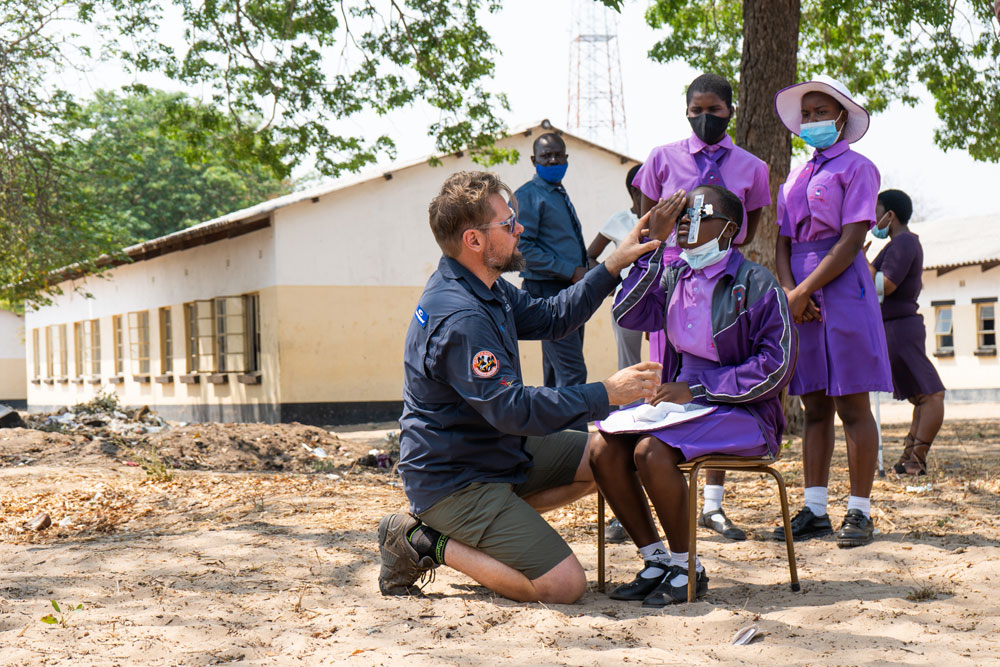

Each kit contains around 550 pairs of glasses (costing $4-5 each) across a broad spectrum of strengths. Together, they cover about 92% of the world’s eye problems. A kit could last a rural community around 3-4 years.
What inspired you to do this?
I was a rescue swimmer with the NSRI for over a decade. When I moved on from there, I felt the need to do something else to help. I’ve got a wonderful vehicle that is completely rigged.
And I know Africa really well, because I’ve travelled a lot for work. That’s when I realised I could do trips to remote schools to bring them glasses.
Why focus on vision?
Here’s one example. On a trip to Namibia, we screened kids in Warmquelle in the middle of Kaokoland. After testing one boy’s eyes, I gave him glasses. He put them on and just as quickly threw them down again. When I asked what was wrong, he told me he’d never seen the tree on the hill. I couldn’t carry on, I had to go around the corner so he couldn’t see my tears.

In these remote areas, there are lions that walk past the outside of the villages. A kid with vision problems like that simply wouldn’t see the predators. Camping in Hwange recently, we had a thousand buffalo walk through our campsite. Twenty minutes later the lions followed, then an elephant. That’s where these kids live, that’s what they have to contend with.
On another trip, there was a little girl we’d given glasses to. While the other kids play outside she sits in class and does her schoolwork because she hasn’t seen her books for so long. Her uncle even came to the school to ask why she was getting so much homework. It turns out that at night she lights a candle and continues doing schoolwork. Not because she has homework to do, but because she can finally read with her glasses.
How often do you head out on a project?
I do a couple of trips a year and there are a few reasons for that. For one, I travel with my family: my wife and eight-year-old daughter. It’s important to me that we experience it together, but it means we can’t be on the road all the time – as much as I would like to!
I also need to plan trips down to the last detail. It takes about 6-8 months to plan each expedition so there are no surprises when we head out. Beforehand I need to know where the schools are, how many kids there are in a school, what their age groups are. I’ve got to calculate fuel and time. I have to understand exactly where we’re going and what the demands are; I can’t afford to arrive and be unprepared for the situation on the ground.
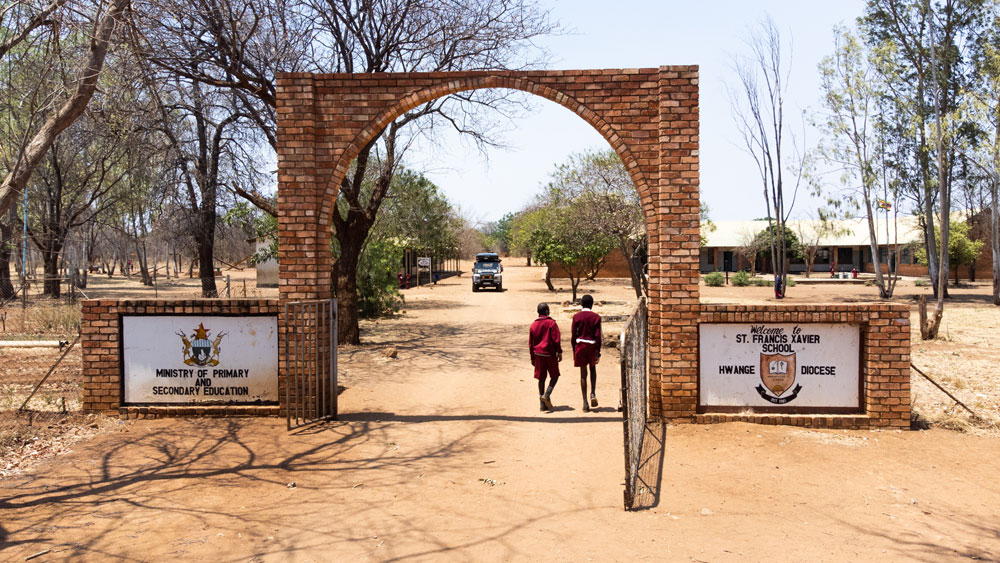
What are some of the logistical challenges?
It really is a tactical mission when we go out there. You have to know your boundaries: fuel, water, supplies. When we’re on the road, we can buy the basics. In most Botswana villages there is a baker, so we can buy fresh rolls. We can buy meat, but we have to use it up in a certain area because of the vet fences. In Zimbabwe we have to carry dollars because card machines might be offline or not even available.
Understanding the route and driving conditions is an important aspect. I can’t have myself or the vehicle go down because we didn’t plan. In these remote areas, distance in kilometres doesn’t equal standard driving hours. We did one road from Gudigwa in the Delta to Sankuyo. It was 220km – basically from Cape Town to Worcester and back – and it took 9.5 hours, mostly in low-range 3rd and 4th gear. We have to plan carefully so we can be fully prepared and that’s why I use Tracks4Africa maps.
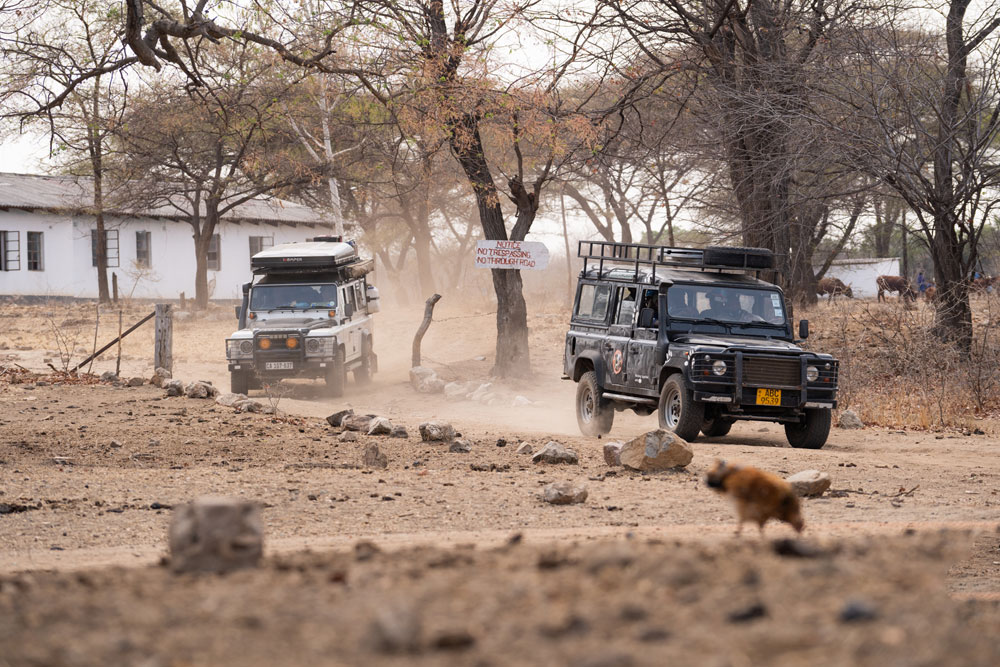
The new update on the Tracks4Africa Guide App has been brilliant, because you can zoom in really close and see each campsite in the area. When I’m off the grid in terms of reception, I leave the T4A Guide App on because I can physically see where I am.
What do you use for communication when you’re off the grid?
I have an inReach Mini that I mostly use for tracking and text messaging. When I first got the device, I wasn’t sure how much I would use it, but now it’s part of my essential kit. On every trip I’ve been on, I’ve found I’ve had to use it. On a recent expedition to the Tuli Block, we didn’t have cellphone signal for three days even though we were in an area with full coverage. Luckily, I could text people about work and let family know that we were okay.
I like the size of the device and leave it plugged in at the back. It connects via Bluetooth to an app on my phone and I get weather updates. Before setting off on a trip, I get a monthly subscription for the satellite service, so I know I’m covered for emergency support.
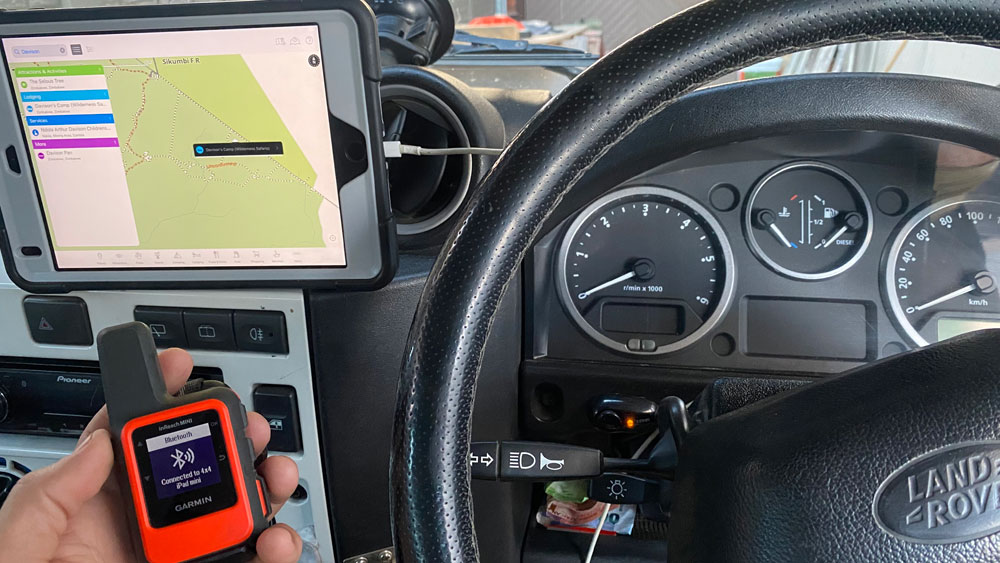
For some reason, we always end up having to drive at night at some point. It’s not planned. We don’t want to drive after dark because of the risk of hitting elephants, donkeys and cattle. But sometimes there’s an unavoidable delay and we have to make up time.
On the Maun to Maun trip I nearly hit an elephant of around 7 tons. He was standing underneath a large baobab tree and he made it look middling. It made me realise that if I need to send an SOS in the middle of nowhere, my cellphone’s not going to do it. That’s why my inReach Mini is on all the time; it’s always plugged in and tracking our movements.
Also read: Off the grid, still in touch with Garmin inReach
How can people get involved with what you’re doing or support remote communities?
People can follow us on social media and use their own channels to share with contacts and friends what we’re doing. I also run fundraisers online: a R100 donation is the equivalent of two pairs of glasses for these kids.
If you really want to get involved with rural communities, don’t simply hand out things. Look at the sustainability of what you’re doing. If you find a little community that touches your heart, make a commitment for something specific like pens and exercise books and do that for several years.
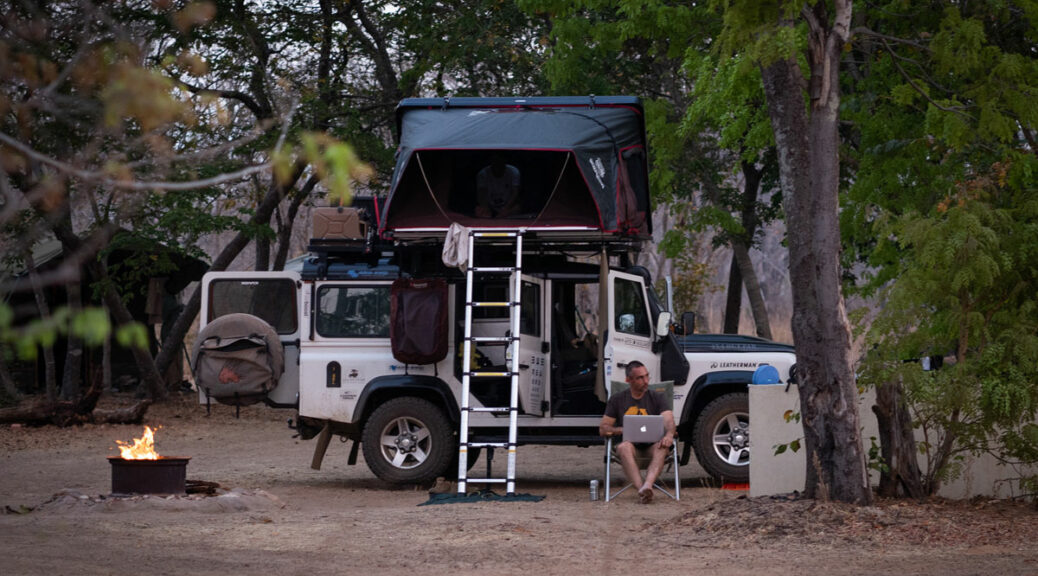

Inspirational.